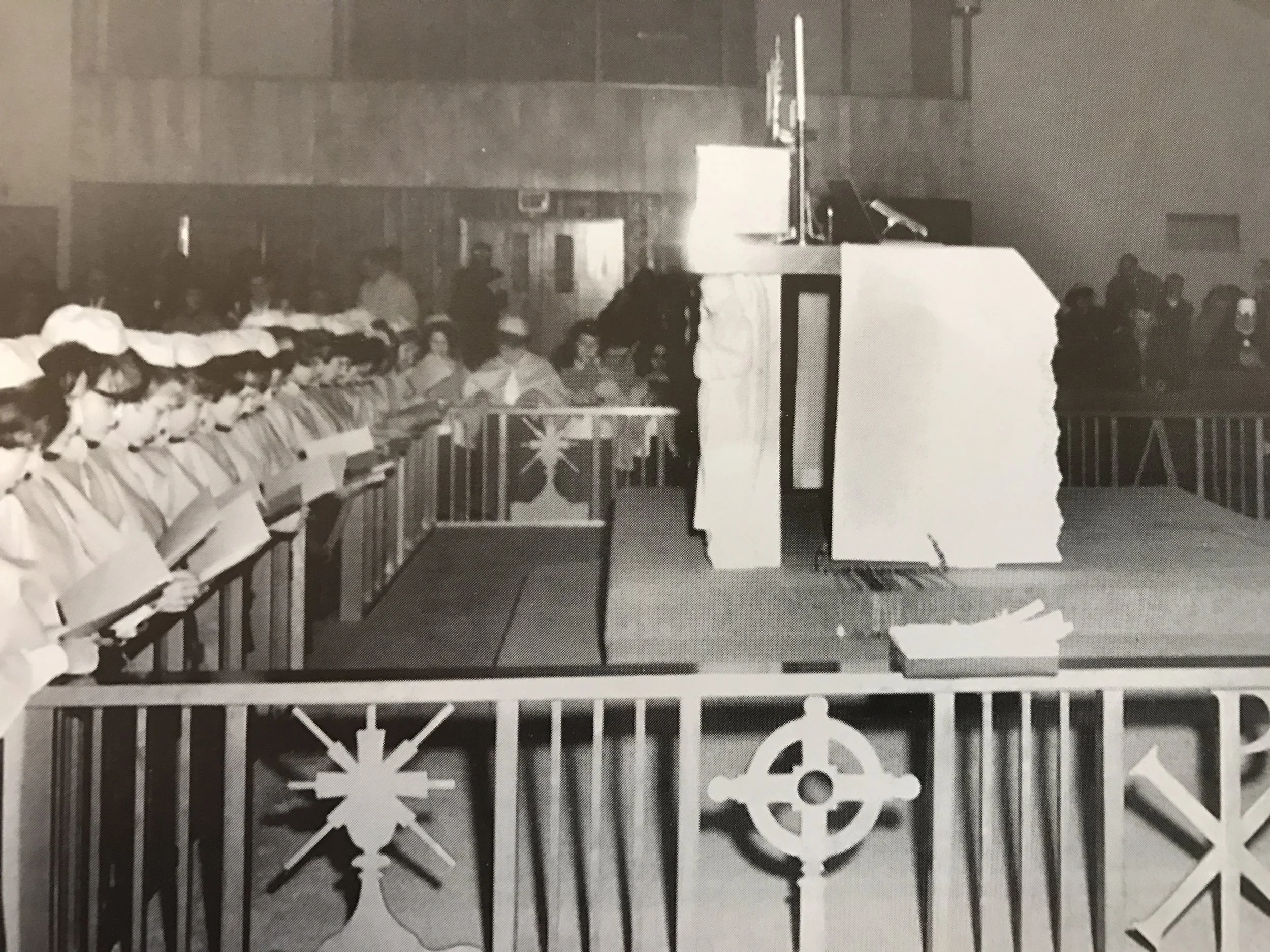Dear Parishioners,
Last week an issue came forward regarding an illicit (unsanctioned or illegal in view of Canon Law) Mass which was was being offered in Grants Pass by the Society of St. Pius X (aka SSPX) who is locally found in Veneta, OR. Consequently, I have had many questions come my way as to why I told our faithful not to attend. Here is a more thorough response.
It is important to know that we, as Catholics must always be in union with our Pope and our Archbishop, and do nothing that will harm our unity. Archbishop Alexander Sample is our local apostle whose role it is to teach, guide, and sanctify the faithful of his diocese, sharing that role with his priests and deacons who serve under him. As a priest and pastor of our archdiocese, I made a solemn promise at my ordination and again when installed as your pastor to be obedient and work in harmony with my bishop and his successors. This is a serious role for all clergy. As citizens of this country, we lift up our rights and independence. Yet while those are goods in so far as they respect the truth, they are not ultimate goods, for our rights can be subjugated by greater rights or responsibilities (ie. the right to life of an unborn child creates a responsibility on the part of the parents preserve that life), and our freedom can only be free when we freely choose the good (ie. we can just do whatever we want, for when we choose to sin, we bind ourselves and lose our freedom).
Remember the four pillars of Catholicism? We proclaim every weekend that we are one, holy, catholic, and apostolic. By being one, we are proclaiming that we are in union with the Holy See as well as our local Ordinary (think bishop). The SSPX have been suspended and do not enjoy full faculties to offer the Sacraments. As such, we all need to know that due to the knowledge of a planned Mass by the SSPX, Archbishop Sample, sadly, had to write the SSPX, denying them permission to offer the Sacraments in the Archdiocese of Portland. Who are the SSPX? Why were they denied permission to offer the Sacraments? Please indulge me as I offer the following excerpt from an EWTN article which was written revised in 2015 by Colin B. Donovan, STL:. You can find the source article here: https://www.ewtn.com/expert/answers/sspx_fssp.htm. In addition, the group also mentioned in the article, the Fraternal Society of St. Peter, can be found on the web here: http://www.fssp.org. Here’s the article in its entirety:
The Society of St. Pius X (SSPX)
The Society was founded in 1970 by Archbishop Marcel Lefebvre, a retired missionary bishop who had served in Africa, in order to perpetuate the traditional liturgical rites of the Church. The previous year Blessed Paul VI had introduced a new missal in response to the liturgical reform called for by the Second Vatican Council. Reformed rites of the other sacraments would follow in the years following.
While Archbishop Lefebvre did not reject the possibility of reforming the sacramental rites (he had voted for the Council document that called for it), he did reject the specific reforms of the Mass promulgated in 1969 in the Missal of Paul VI. For this reason, the Society he founded uses the 1962 Missal and the other sacramental ritual books of that era.
In 1971 Archbishop Lefebvre started a seminary in Ecône, Switzerland, to train priests for the Society. Despite being specifically warned by the Pope not to ordain them, the Archbishop ordained the first ones to the priesthood in 1976. Those ordinations were valid, but illicit. Pope Paul VI immediately suspended the Archbishop's priestly faculties, and those of the men he had ordained. Those suspensions remain effective, and apply to all new ordinands of the Society, until such time as the Holy See regularizes the status of the SSPX and its clergy.
In 1988, Archbishop Lefebvre, now fearing that he would die and leave no one to ordain priests for the SSPX, sought an agreement with the Holy See for the lawful continuation of the Society. After reaching an agreement with Cardinal Joseph Ratzinger, acting for Pope St. John Paul II, Archbishop Lefebvre broke the agreement and, in an act which was ipso facto schismatic, ordained 4 bishops without a papal mandate. This action incurred an automatic excommunication under canon 1387, confirmed a few days later by Decree of the Holy See (https://www.ewtn.com/library/CURIA/CBISLEFB.HTM). Twenty years later (January 2009), as part of another effort at reconciliation on the part of Rome, Pope Benedict XVI lifted these excommunications. Despite this, to date reconciliation has not been achieved.
Therefore, until the status of the SSPX is regularized by the Holy See, the bishops and priests of the Society remain suspended from the exercise of Holy Orders. Their celebration of the sacraments are valid but illicit, except for those sacraments requiring jurisdiction (Penance, Marriage), which are both invalid and illicit. This means that sacramental absolution by a Society priest is invalid for lack of jurisdiction, a requirement in all circumstances but the danger of death (canon 976). Similarly, lacking jurisdiction, marriages witnessed by SSPX clergy would also be invalid, for defect of the "Catholic form", which requires witnessing by one's bishop or proper pastor or a dispensations for other circumstances (canon 1108).
For both Penance and Matrimony, while it is theoretically possible that a particular absolution or marriage might be valid due to "common error," in which the penitent or couple are ignorant of the priest's lack of jurisdiction (which the Church then supplies by law, canon 144), given the notoriety of the canonical status of the SSPX it seems highly implausible in fact that such cases exist, since willful ignorance provides no such excuse.
Priestly Fraternity of St. Peter (FSSP)
In the circumstances of the 1989 episcopal ordinations, some SSPX clergy and seminarians, not wanting to go into schism, sought an agreement with the Holy See. This request resulted in the founding of the Sacerdotal (Priestly) Fraternity of St. Peter (FSSP).
This immediate erection of the Fraternity by the Holy See, without all the preliminaries of time and formality usually required, was a tremendous charity by the Pope toward the former members of the SSPX, who have since returned it with loyalty and faithfulness, together with their tremendous devotion to the Traditional rites, which is their proper charism.
The Fraternity, therefore, celebrates the Mass and other Sacraments according to the Missal and ritual books of 1962, validly and licitly, in complete communion with the local Ordinary and with the Roman Pontiff.
Since the writing of this article, Pope Francis allowed priests of the SSPX to validly and licitly hear confessions during our Jubilee Year of Mercy which he later extended until other provisions are made. So, clearly our Holy Father desires full unity and reconciliation, and is striving to shepherd the flock.
This situation is complicated, but as you have read, the Church continues to dialogue with the SSPX to find resolution. I know, personally, that Archbishop Sample desires such dialogue and reconciliation. Let us all pray for that unity. In the meantime, for those who seek out a licit Mass in Latin under the 1962 Missal, what is now called the Extraordinary Form of the Mass, we hold such a Mass every other month at Our Lady of the River in Rogue River. Those dates are March 12, May 21, July 2, September TBD, and Nov. 5 (Archbishop Vlazny will be offering that last Mass).
I hope this rather lengthy reflection helps fill in the blanks where there are questions. Let us all continue to pray for unity and harmony wherever it does not now exist.
Blessings,
Fr. William Holtzinger
Pastor
Description of the logo for FSSP (from the SSP website: http://www.fssp.org/en/telecharger.htm):
The two crossed keys principally evoke Saint Peter, Patron of our Fraternity. They also refer to the Holy See, to which we have been united with indefectible fidelity since our foundation. The absence of a tiara and the color of the background, however, clearly distinguish our arms from those of the Apostolic See. The blue background, a Marian color, reminds us that the FSSP is under the protection of the Mother of God (Constitutions #4). Lastly, the tears commemorate the difficult historical circumstances of our inception: “Qui seminant in lacrimis, in exsultatione metent” (Ps 125, 5), as well as Saint Peter’s triple assertion of love for the Lord (Jn 21, 15-17). This number may also evoke the three central aspects of our charism – hierarchical fidelity, doctrinal rectitude and the Gregorian liturgy.















